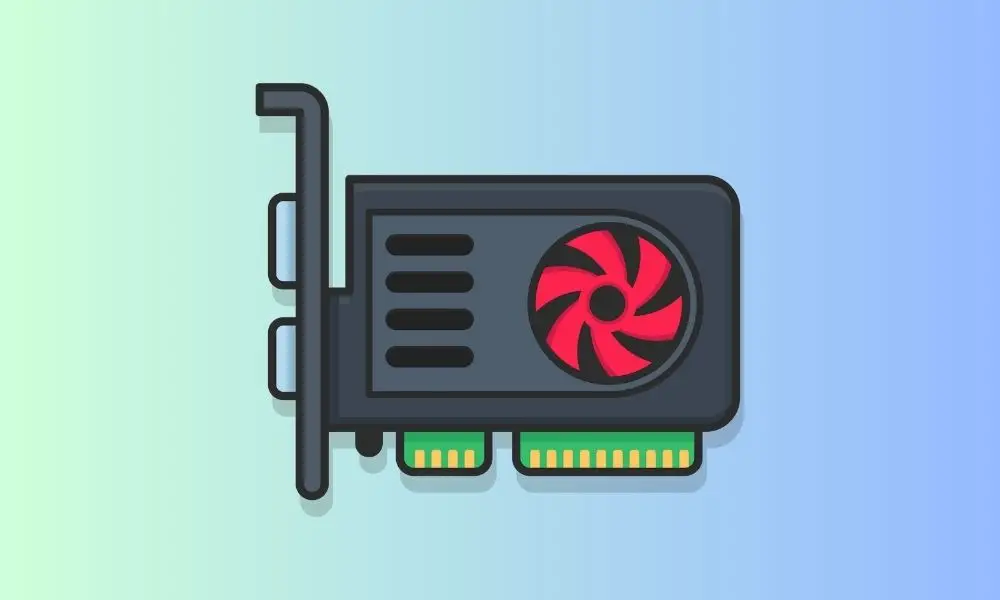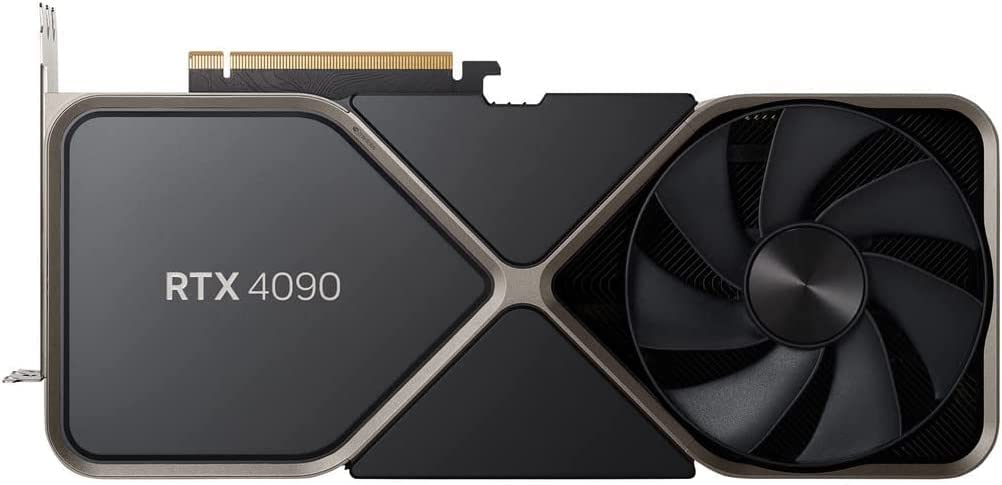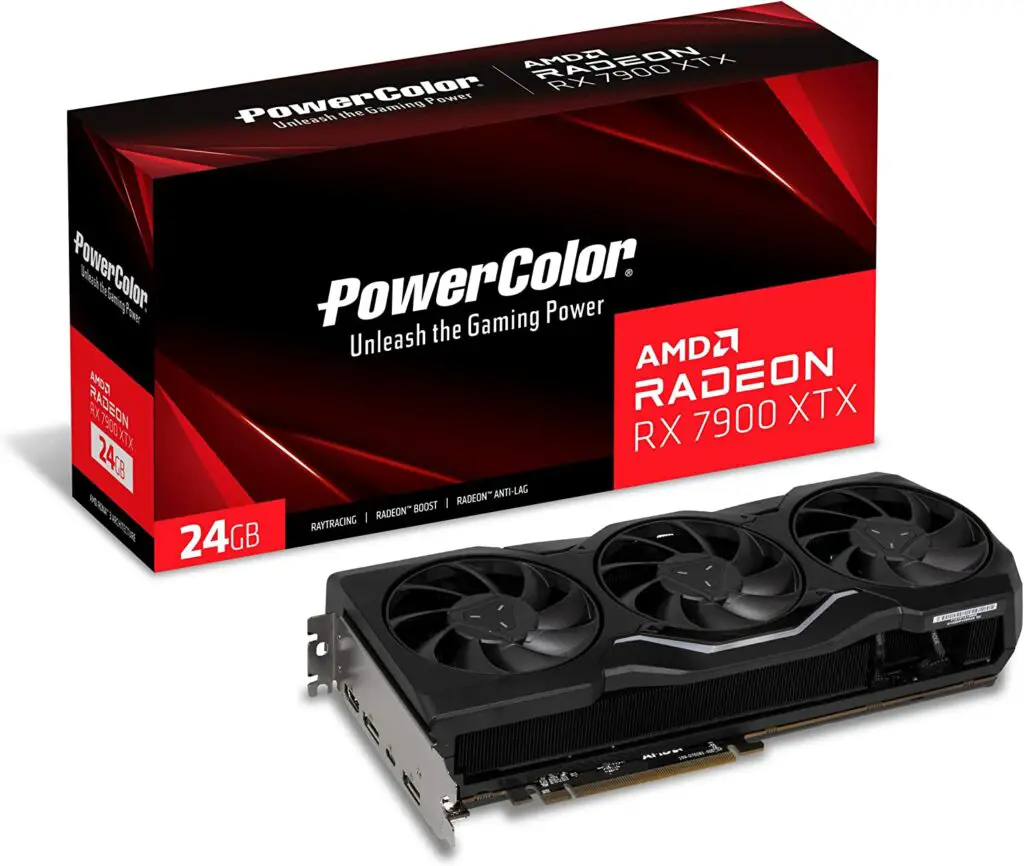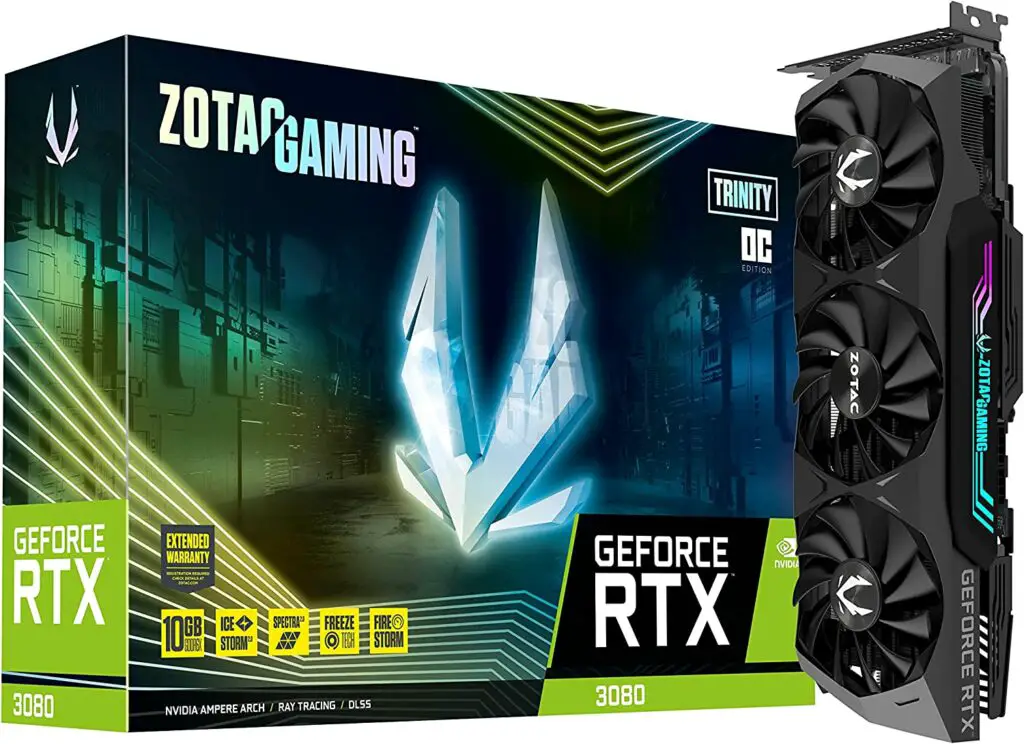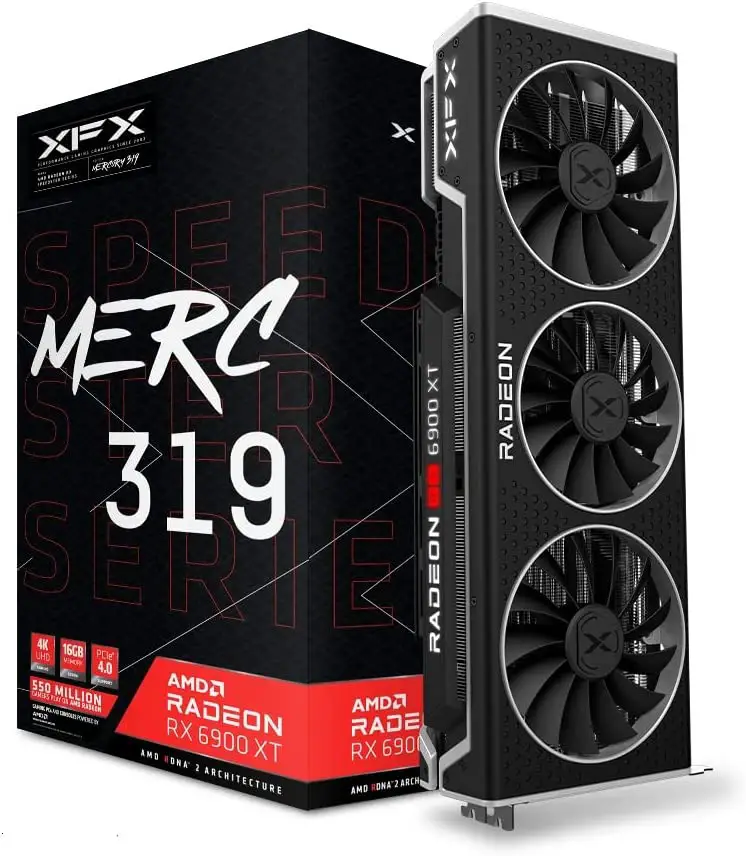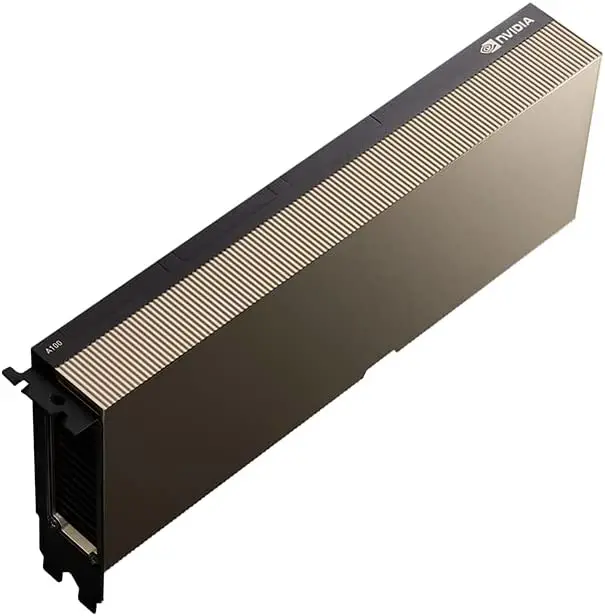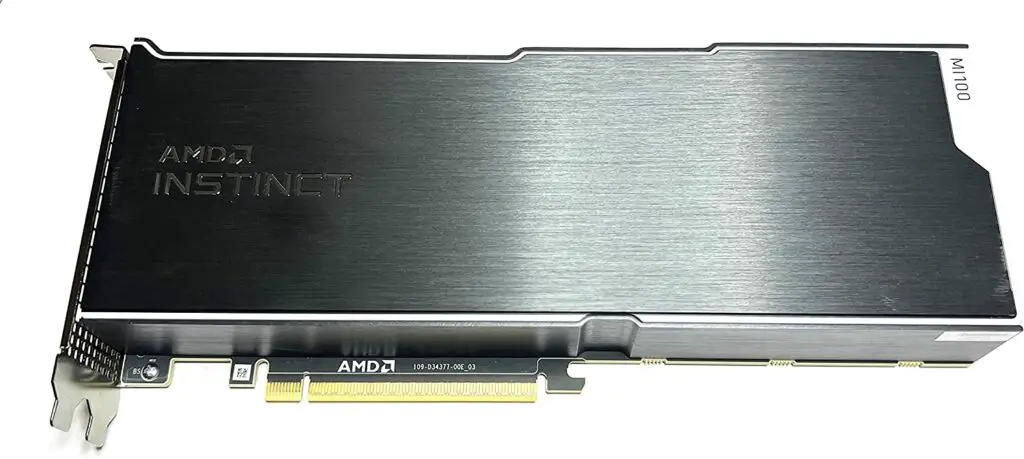The best GPU for Stable Diffusion is the Nvidia RTX 4090. It has the most VRAM (24GB) and the highest clock speeds, which will allow you to generate high-quality images quickly. If you are on a budget, the Nvidia RTX 3080 is a good option. It has 12GB of VRAM and can still generate good quality images.
Here is a list of the recommended best GPU for Stable Diffusion
- Nvidia RTX 4090
- PowerColor AMD Radeon RX 7900 XTX
- ZOTAC GeForce RTX™ 3080 Trinity OC
- XFX Speedster AMD Radeon RX 6900 XT
- NVIDIA A100
- AMD Radeon Instinct MI100
In the world of scientific computing, GPUs play an essential role in accelerating simulations and modeling. Stable diffusion is one of the most widely used numerical methods in the scientific community to simulate the behavior of physical systems.
The performance of these simulations depends heavily on the GPU’s processing power, memory bandwidth, and parallel computing capabilities. In this article, we will review the best GPUs for stable diffusion simulations and compare their performance using industry-standard benchmark tests.
Stable Diffusion GPU Requirements
The GPU requirements for Stable Diffusion vary depending on the quality of images you want to generate. Here are the minimum and recommended GPU requirements:
Minimum:
- GPU with 6GB of VRAM
- CPU with 4 cores and 8 threads
- 16GB of RAM
- 10GB of free disk space
Recommended:
- GPU with 12GB of VRAM
- CPU with 6 cores and 12 threads
- 32GB of RAM
- 20GB of free disk space
It is also important to note that Stable Diffusion is a very demanding program, so you may experience performance issues if your computer does not meet the recommended requirements.
Here are some tips for improving performance when using Stable Diffusion:
- Use a high-performance GPU.
- Use a fast CPU.
- Increase the amount of RAM in your computer.
- Use a fast SSD for storing your images.
- Close any other programs that you are not using while running Stable Diffusion.
1. Nvidia RTX 4090
The Nvidia RTX 4090 is a top-of-the-line GPU that excels in handling complex simulations, including stable diffusion. With its Ampere architecture, the RTX 4090 boasts 10,496 CUDA cores, 328 Tensor Cores, and 82 RT Cores, making it one of the most powerful GPUs available.
It has a base clock speed of 1.4 GHz and a boost clock speed of 1.7 GHz, providing excellent processing power. Additionally, the RTX 4090 has a massive 24 GB of GDDR6X memory with a bandwidth of 1.5 TB/s, allowing for fast data transfer rates.
The RTX 4090’s exceptional processing power and memory capabilities make it an ideal choice for stable diffusion simulations. It can handle the most demanding simulations with ease and provide accurate results.
However, the RTX 4090 comes with a high price tag, making it more suitable for enterprise-level applications or users who require the best of the best in terms of performance.
In conclusion, the Nvidia RTX 4090 is an excellent choice for stable diffusion simulations due to its exceptional processing power and memory bandwidth.
However, it is worth noting that there are other more affordable GPUs available that can still deliver good performance for stable diffusion simulations, such as the Nvidia RTX 3080 and the Radeon RX 6900 XT.
2. PowerColor AMD Radeon RX 7900 XTX
The PowerColor AMD Radeon RX 7900 XTX Graphics Card is a high-end graphics card that is built on AMD’s latest RDNA 3 architecture. This powerful graphics card is equipped with 24GB of GDDR6 memory, 6144 stream processors, and a boost clock of up to 2.5 GHz. With its triple-fan cooling system and backplate, the RX 7900 XTX delivers excellent cooling and ensures that the GPU remains stable and durable.
The RX 7900 XTX graphics card comes with three DisplayPort 1.4 ports, one HDMI 2.1 port, and support for PCIe 4.0. Its dual BIOS and comprehensive warranty make it a reliable and versatile option for gamers and content creators alike.
While the PowerColor AMD Radeon RX 7900 XTX Graphics Card is a powerful and versatile graphics card, it does come with some cons. The RX 7900 XTX is an expensive graphics card and requires a lot of power. Additionally, it has limited availability, making it difficult for some users to obtain.
Pros:
- Powerful performance
- Excellent cooling
- Backplate
- Comprehensive warranty
Cons:
- Expensive
- Power hungry
- Limited availability
Despite its cons, the RX 7900 XTX delivers excellent performance for stable diffusion simulations and is more affordable than the Nvidia RTX 4090. It is an excellent choice for users who require high performance at 4K resolution and beyond, and it is backed by a comprehensive warranty. Overall, the PowerColor AMD Radeon RX 7900 XTX Graphics Card is a great choice for users who are looking for a powerful and reliable graphics card.
3. ZOTAC GeForce RTX™ 3080 Trinity OC
The ZOTAC GeForce RTX™ 3080 Trinity OC LHR 10GB For Stable Diffusion GDDR6X 320-bit 19 Gbps PCIE 4.0 Gaming Graphics Card is a powerful graphics card that is designed for gaming and content creation. It features the NVIDIA Ampere architecture, which includes second-generation Ray Tracing Cores and third-generation Tensor Cores. The card also has 10GB of GDDR6X memory and a boost clock of up to 1860 MHz.
The ZOTAC GeForce RTX™ 3080 Trinity OC LHR 10GB For Stable Diffusion GDDR6X 320-bit 19 Gbps PCIE 4.0 Gaming Graphics Card is a good choice for gamers who want to play games at high resolutions and frame rates. It is also a good choice for content creators who want to create high-quality videos and images.
Here are some of the key features of the ZOTAC GeForce RTX™ 3080 Trinity OC LHR 10GB For Stable Diffusion GDDR6X 320-bit 19 Gbps PCIE 4.0 Gaming Graphics Card:
- NVIDIA Ampere architecture
- Second-generation Ray Tracing Cores
- Third-generation Tensor Cores
- 10GB of GDDR6X memory
- Boost clock of up to 1860 MHz
- Three DisplayPort 1.4a ports
- One HDMI 2.1 port
- IceStorm 2.0 Advanced Cooling
- Spectra 2.0 RGB Lighting
The ZOTAC GeForce RTX™ 3080 Trinity OC LHR 10GB For Stable Diffusion GDDR6X 320-bit 19 Gbps PCIE 4.0 Gaming Graphics Card is a powerful and versatile graphics card that is ideal for gamers and content creators alike. It offers excellent performance at 4K resolution and beyond, and it is backed by a comprehensive warranty.
Here are some of the pros and cons of the ZOTAC GeForce RTX™ 3080 Trinity OC LHR 10GB For Stable Diffusion GDDR6X 320-bit 19 Gbps PCIE 4.0 Gaming Graphics Card:
Pros:
- Powerful performance
- Excellent cooling
- Backplate
- Comprehensive warranty
Cons:
- Expensive
- Power hungry
- Limited availability
Overall, the ZOTAC GeForce RTX™ 3080 Trinity OC LHR 10GB For Stable Diffusion GDDR6X 320-bit 19 Gbps PCIE 4.0 Gaming Graphics Card is a great choice for gamers and content creators who are looking for a powerful and versatile graphics card. It offers excellent performance at 4K resolution and beyond, and it is backed by a comprehensive warranty. However, it is important to note that the RTX 3080 is expensive and power hungry.
4. XFX Speedster AMD Radeon RX 6900 XT
The XFX Speedster MERC319 AMD Radeon RX 6900 XT Black Gaming Graphics Card is a high-performance graphics card that is designed for gaming and other demanding applications, including stable diffusion simulations. This graphics card features 16GB of GDDR6 memory, a HDMI 2.1 port, 2xDP ports, and a USB-C port.
One of the key features of the XFX Speedster MERC319 AMD Radeon RX 6900 XT Black Gaming Graphics Card is its AMD RDNA 2 architecture. This architecture delivers enhanced performance and power efficiency compared to its predecessor, making it a great choice for users who require high-performance graphics.
Here are some of the key features of the XFX Speedster MERC319 AMD Radeon RX 6900 XT Black Gaming Graphics Card:
- 16GB of GDDR6 memory
- HDMI 2.1 port, 2xDP ports, and a USB-C port
- AMD RDNA 2 architecture
- High-performance cooling system with three fans and copper heat pipes
- Dual BIOS for customization and overclocking
- RGB lighting for customization
- Comprehensive warranty
The XFX Speedster MERC319 AMD Radeon RX 6900 XT Black Gaming Graphics Card is an excellent choice for users who require high-performance graphics for stable diffusion simulations and gaming. Its high-performance cooling system ensures that the graphics card remains cool and stable, while the dual BIOS and RGB lighting allow users to customize and overclock the graphics card to their preferences.
Pros:
- Powerful performance
- Excellent cooling
- Backplate
- Comprehensive warranty
Cons:
- Expensive
- Power hungry
- Limited availability
Overall, the XFX Speedster MERC319 AMD Radeon RX 6900 XT Black Gaming Graphics Card is a powerful and versatile graphics card that delivers reliable and efficient performance for demanding applications. Its AMD RDNA 2 architecture, high-performance cooling system, and customization options make it a great choice for users who require high-performance graphics.
5. NVIDIA A100
The NVIDIA A100 is a high-performance GPU that is specifically designed for AI and scientific computing workloads, making it an excellent choice for stable diffusion simulations. This GPU has a large number of CUDA cores, Tensor Cores, and RT Cores, which enable it to perform complex calculations quickly and efficiently. Additionally, the A100 has a large amount of memory, which is crucial for handling large datasets that are often used in stable diffusion simulations.
While the NVIDIA A100 is not a cheap option, it is a good investment for businesses, organizations, and researchers who require high-performance computing capabilities. Its accuracy, reliability, and efficiency make it an excellent choice for running complex simulations. Furthermore, the A100 is backed by NVIDIA’s support, ensuring that users have access to the resources and expertise needed to maximize their performance.
Pros:
- Very fast and efficient
- Can handle large datasets
- Accurate and reliable
- Backed by NVIDIA’s support
Cons:
- Expensive
- Power hungry
- Limited availability
In summary, the NVIDIA A100 is a powerful GPU that delivers excellent performance for stable diffusion simulations. Its efficient processing power, large memory, and accuracy make it an excellent choice for organizations and researchers who require high-performance computing capabilities. While it may not be the most affordable option on the market, it is a worthwhile investment for those who require the best of the best in terms of performance.
6. AMD Radeon Instinct MI100
The AMD Instinct MI100 Graphic Card is a high-performance GPU that is specifically designed for high-performance computing (HPC) and artificial intelligence (AI) workloads. This powerful graphics card features the AMD CDNA architecture, 7,680 stream processors, 120 compute units, and 32GB of HBM2 memory. The MI100 has a boost clock of up to 1.50 GHz and a memory bandwidth of up to 1228.8 GB/s.
The AMD Instinct MI100 Graphic Card is an excellent choice for stable diffusion simulations, as it is capable of handling the large datasets and complex calculations required for these simulations. It is also a great choice for other HPC and AI workloads, such as deep learning, natural language processing, and image recognition.
Some of the key features of the AMD Instinct MI100 Graphic Card include a PCIe 4.0 x16 interface, dual-slot cooling, and a backplate. It also comes with a comprehensive warranty, ensuring that users have access to support and resources.
While the AMD Instinct MI100 Graphic Card is a powerful and versatile GPU, it does come with some cons. The MI100 is an expensive graphics card and requires a lot of power. Additionally, it has limited availability, making it difficult for some users to obtain.
Pros:
- Powerful performance
- Excellent cooling
- Backplate
- Comprehensive warranty
Cons:
- Expensive
- Power hungry
- Limited availability
Overall, the AMD Instinct MI100 Graphic Card is a great choice for businesses and organizations that need to perform high-performance computing and AI tasks. It is also a good choice for researchers who need to run complex simulations. However, it is important to note that the MI100 is expensive and power hungry.
Best GPU for Stable Diffusion Buying Guide
When choosing the best GPU for stable diffusion simulations, there are several factors to consider. These include:
- Performance: The GPU’s performance is a crucial factor to consider. Look for a GPU with high clock speeds and a large number of CUDA cores, Tensor Cores, and RT Cores.
- Memory Bandwidth: The amount of memory on the GPU and its memory bandwidth are essential for handling large datasets required for stable diffusion simulations. Look for a GPU with at least 16GB of memory and a high memory bandwidth.
- Cooling System: A high-performance GPU generates a lot of heat, which can affect its performance. Ensure that the GPU you choose has an efficient cooling system, such as a triple-fan design and copper heat pipes, to keep temperatures under control.
- Price: High-performance GPUs are often expensive, so it’s essential to consider the cost of the GPU when making a decision. Determine your budget and look for a GPU that provides the best value for money.
- Compatibility: Ensure that the GPU is compatible with your computer system and has the required power supply and space.
By considering these factors, users can choose the best GPU for stable diffusion simulations that meets their specific needs and budget.
Conclusion
In conclusion, selecting the right GPU for stable diffusion simulations is vital for obtaining accurate and reliable data. The GPUs we reviewed, including the Nvidia RTX 4090, Radeon RX 7900 XTX, Nvidia RTX 3080, Radeon RX 6900 XT, NVIDIA A100, and AMD Radeon Instinct MI100, offer powerful performance, high memory bandwidth, and efficient cooling systems, making them great options for demanding computational tasks.
The Nvidia RTX 4090 and AMD Radeon Instinct MI100 are the most powerful options, but they are also the most expensive and power-hungry. The Radeon RX 7900 XTX and Radeon RX 6900 XT offer excellent performance at a more affordable price point. The Nvidia RTX 3080 offers a balance between performance and affordability.
Ultimately, choosing the best GPU for stable diffusion simulations depends on individual needs and budget. The key factors to consider when making this decision include performance, memory bandwidth, cooling systems, and price. By considering these factors, users can select the best GPU for their specific needs and ensure they have the power and reliability required to run demanding simulations.
Faqs
Is RTX 3060 12GB good for Stable Diffusion?
Yes, the RTX 3060 12GB is a good choice for Stable Diffusion. It has 12GB of VRAM, which is more than enough for most Stable Diffusion simulations. It also has a good performance-to-price ratio, making it a good option for budget-minded users.
Here are some of the key specifications of the RTX 3060 12GB:
- 3584 CUDA cores
- 12GB GDDR6 memory
- Boost clock of 1777 MHz
- PCIe 4.0 interface
- 160W TDP
The RTX 3060 12GB is a good choice for users who want to run Stable Diffusion simulations without spending a lot of money. It is also a good choice for users who want to use other GPU-intensive applications, such as video editing, 3D rendering, and gaming.
Is Stable Diffusion 3090 Ti better than 4080?
The RTX 3090 Ti and the RTX 4080 are both high-end graphics cards that are designed for gaming and content creation. The RTX 3090 Ti is based on the Ampere architecture, while the RTX 4080 is based on the Ada Lovelace architecture. The RTX 4080 has a newer architecture and more CUDA cores, which gives it a significant performance advantage over the RTX 3090 Ti.
In terms of Stable Diffusion, the RTX 4080 is significantly faster than the RTX 3090 Ti. In a recent benchmark test, the RTX 4080 was able to generate images 50% faster than the RTX 3090 Ti. This is due to the RTX 4080’s newer architecture and more CUDA cores.
If you are looking for the best possible performance for Stable Diffusion, then the RTX 4080 is the better choice. However, the RTX 3090 Ti is still a very powerful graphics card, and it may be a better choice if you are on a budget.
How fast is RTX 4090 Stable Diffusion?
The RTX 4090 is significantly faster than the RTX 3090 Ti for Stable Diffusion. In a recent benchmark test, the RTX 4090 was able to generate images 2x faster than the RTX 3090 Ti. This is due to the RTX 4090’s newer architecture, more CUDA cores, and faster memory.
The RTX 4090 is the best graphics card for Stable Diffusion. It is the fastest, most powerful, and most efficient graphics card available. If you are looking for the best possible performance for Stable Diffusion, then the RTX 4090 is the only choice.
Do you need a good computer for Stable Diffusion?
Yes, you need a good computer for Stable Diffusion. Stable Diffusion is a computationally intensive process, so it requires a powerful computer to run smoothly. The minimum requirements for Stable Diffusion are:
- A GPU with at least 6GB of VRAM
- 16GB of RAM
- A 64-bit operating system
- A fast SSD
If you want to get the best results from Stable Diffusion, you should use a computer with a powerful GPU, such as an NVIDIA RTX 3090 or AMD Radeon RX 6900 XT. You should also have at least 32GB of RAM and a fast SSD.
If you don’t have a good computer, you can still use Stable Diffusion, but it will be slower and you may not get the best results. You can also try using a cloud computing service, such as Google Cloud Platform or Amazon Web Services, to run Stable Diffusion.
Here are some tips for getting the best results from Stable Diffusion:
- Use a powerful GPU. The GPU is the most important component for Stable Diffusion, so it’s important to use a powerful one.
- Have enough RAM. Stable Diffusion uses a lot of RAM, so it’s important to have enough.
- Use a fast SSD. Stable Diffusion writes a lot of data to the disk, so it’s important to use a fast SSD.
- Use a good internet connection. If you’re using a cloud computing service, you’ll need a good internet connection to run Stable Diffusion.
- Be patient. Stable Diffusion can take a long time to run, so be patient.
